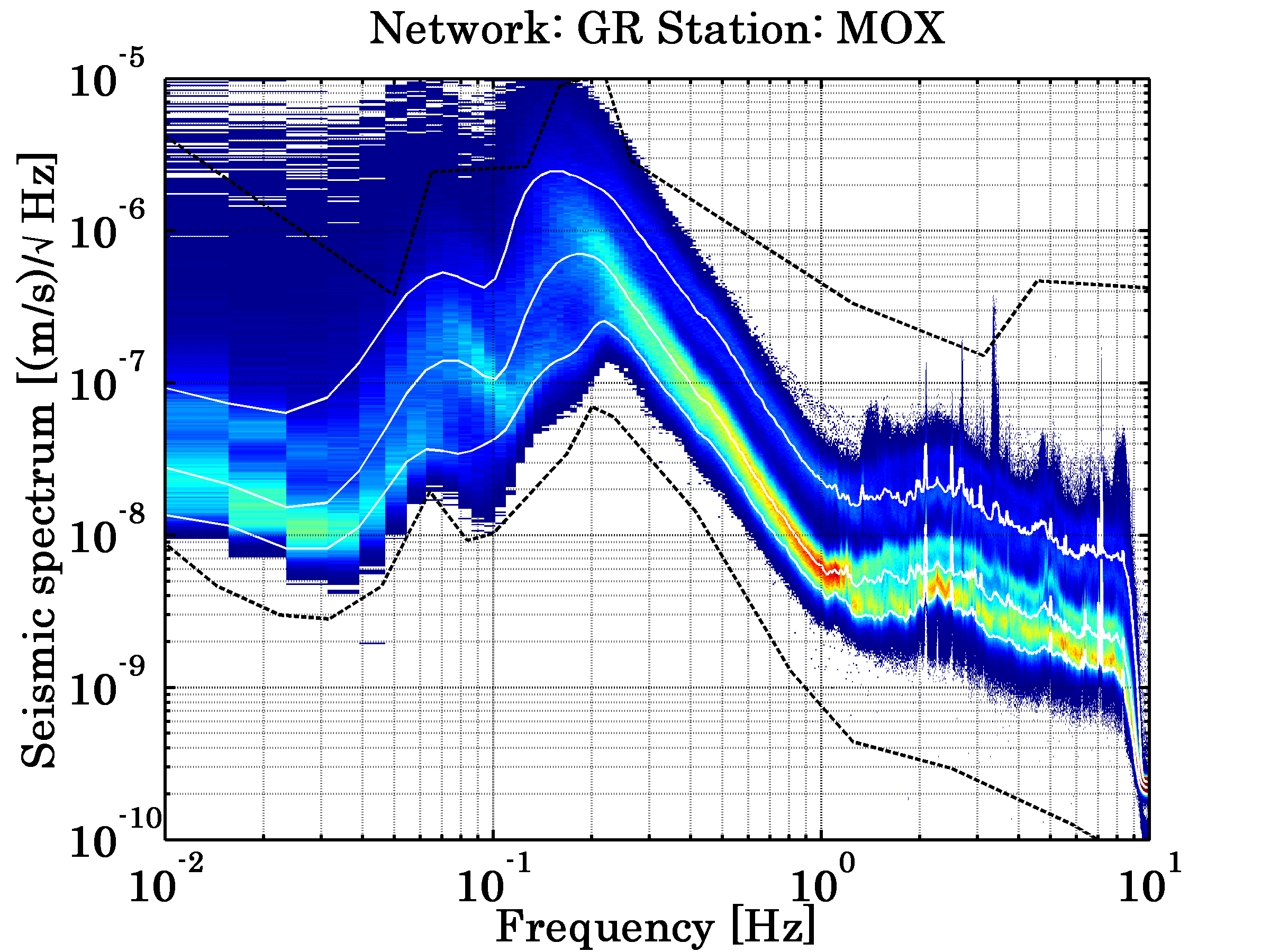Looking at seismic noise around the Earth there is commonly a peak in the seismic noise around a frequency of 200 mHz. This peak is typically referred to as the microseism (an example is shown below). What is the source of these low frequency oscillations.
From experience I know that in southern Louisiana the motion at this peak is generally stronger throughout the winter than in the summer. I have also been told that it is associated with water waves in the gulf, but it is unclear how those waves get converted to ground motion tens of miles inland.
